“On April 29, 2016, Isaiah-Levi Anthony Johnson was pushed into this world. The nurse handed me my perfectly healthy baby. He was to be my last baby, and I swore I would not rush him to grow. I would enjoy every minute of his baby phase, screaming sleepless nights and all. He was perfect. No one in my family had been diagnosed with any disabilities or genetic disorders. Isaiah was on time with all his screenings and appeared healthy.
That’s all you ever really want when you’re pregnant, a healthy baby.
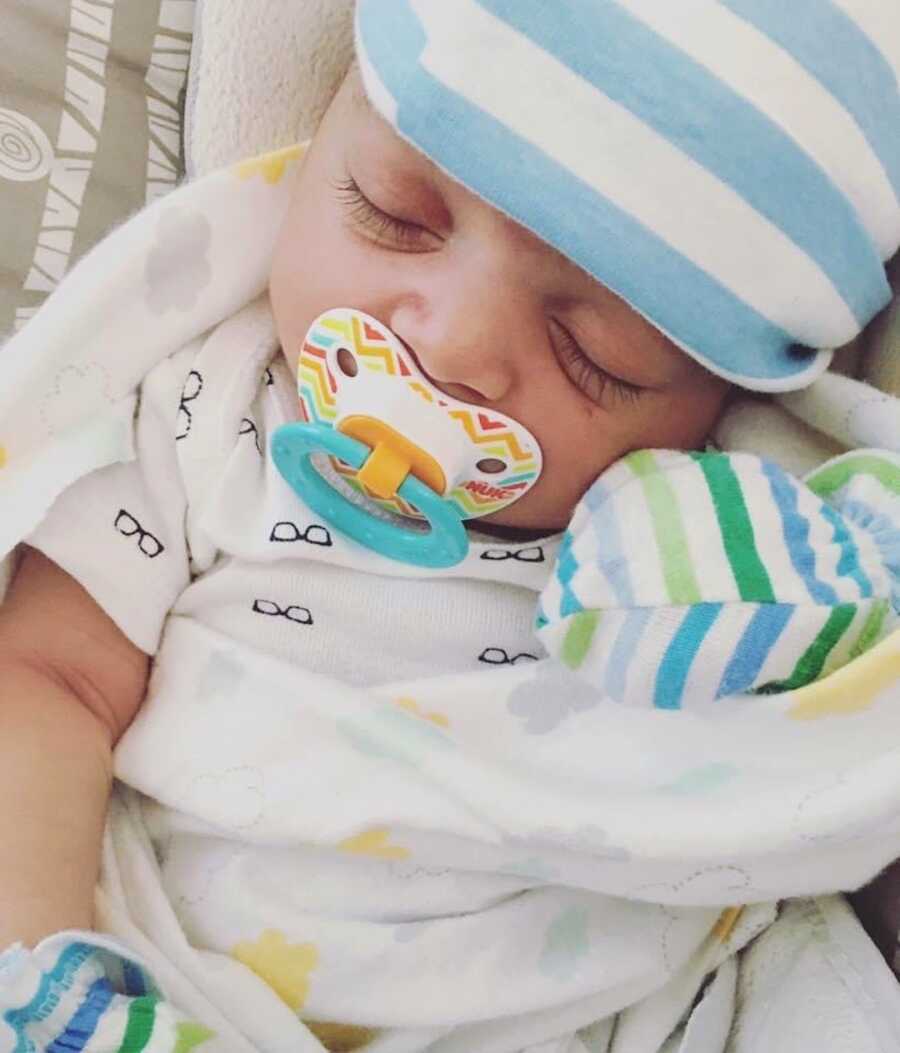
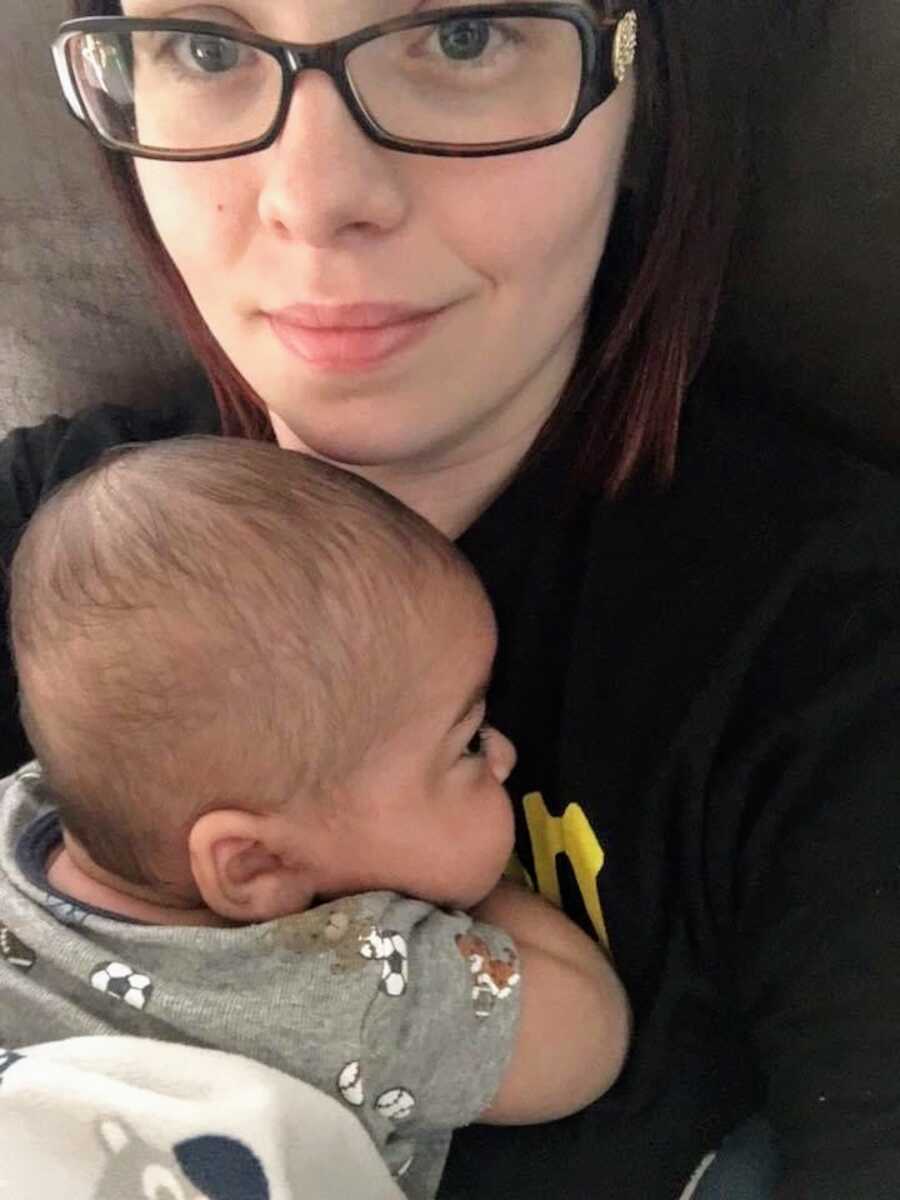
In January 2018, I started nursing school as a mother to three healthy young boys, all under 8 years old. It was finally time for me to finish that degree I always wanted.
It wasn’t until later that year when Isaiah was just two years old, that I noticed his scapulas. It was July 11, 2018, I was watching my tiny toddler push himself up to his feet from our living room floor after one of his frequent tumbles when I noticed his scapulas winged as he climbed his hands up his legs to help him straighten his back. This movement when standing is known as the ‘Gower’s sign.’ Children with muscular dystrophy have weakened hip muscles making it difficult for them to stand. Still, at that time, I didn’t have any idea that this cute, quirky thing my son did to help him stand up was considered a classic sign of muscular dystrophy. All I knew was my son looked different, different from before, and different from his brothers. He had never grown out of his clumsy ‘baby’ walk and typically fell at least 2-3 times a day. I was worried that maybe he had injured himself from one of his falls.
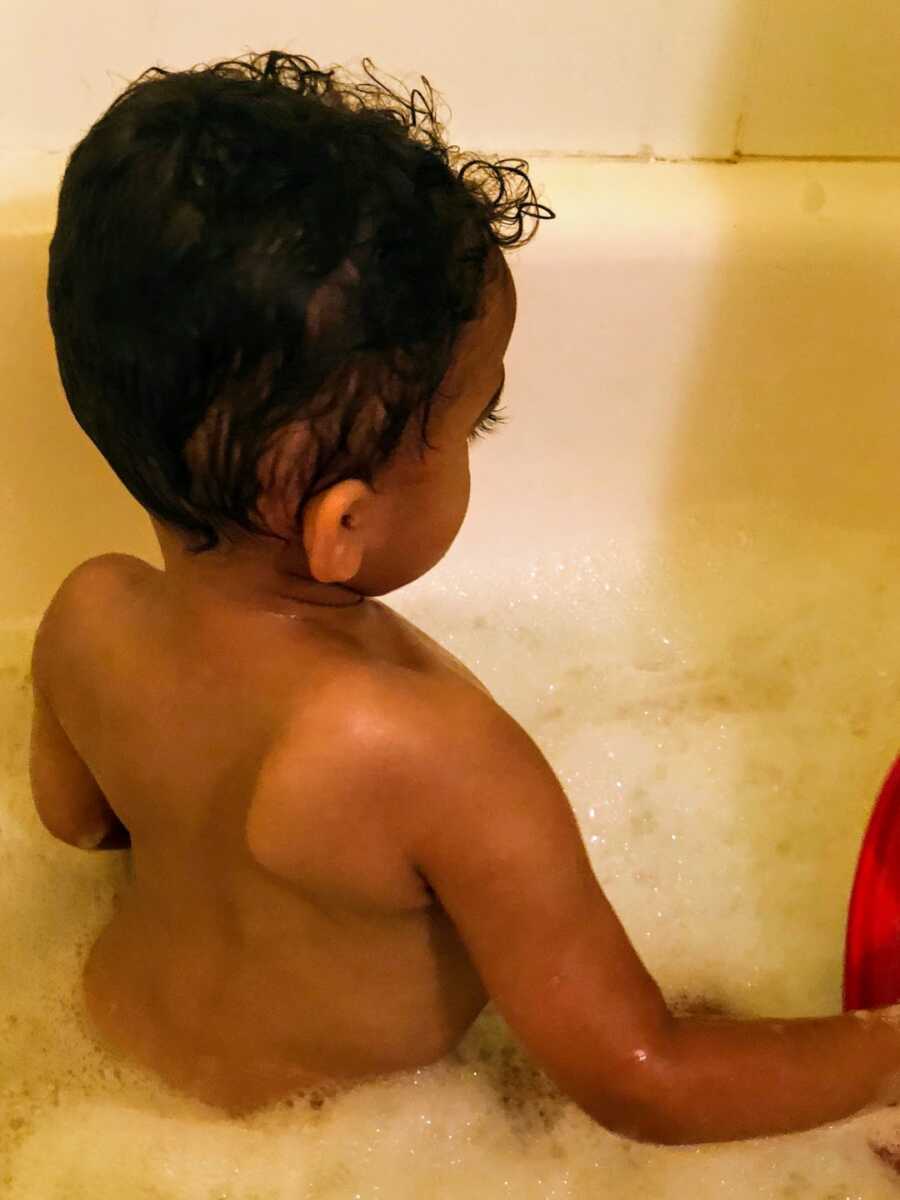
The first step was, of course, to take him to his pediatrician. I remember his pediatrician not being concerned. She said he was ‘just thin’ and ‘small for his age,’ but she didn’t see anything wrong with his scapulas. Still, something felt wrong.
I think somehow I knew. I think a mother always knows.
I pushed harder. I insisted something was wrong. I don’t know if she really believed me or just wanted to appease me, but his doctor finally gave us a referral to an orthopedic specialist.
The orthopedic specialist got us in quickly. It was a small office located inside an older hospital, the kind of office that specializes in fixing broken bones and sports injuries. All I remember thinking was, ‘This office is so grey. It’s definitely not a pediatric specialist.’ It felt like a rushed appointment, an in-and-out sort of thing. A physician walked into the small grey room and assessed my son for about 5 minutes. He said that he saw ‘no sign of injury’ per their x-ray or his exam. He mentioned that if I still felt concerned for an injury that ‘it could be a soft tissue injury.’ He told me to go to the hospital and ask for an MRI. I left that appointment feeling lost. It felt like no one was listening to me, and I knew something was wrong.
The hospital waiting room was empty. Maybe it was a slow day in their ER, either way, I was thankful for it. We were seen quickly by a nurse practitioner. She was friendly, she listened, but she didn’t really believe anything was wrong. I guess at first glance when Isaiah was a toddler, he looked normal. He looked like just an average clumsy toddler.
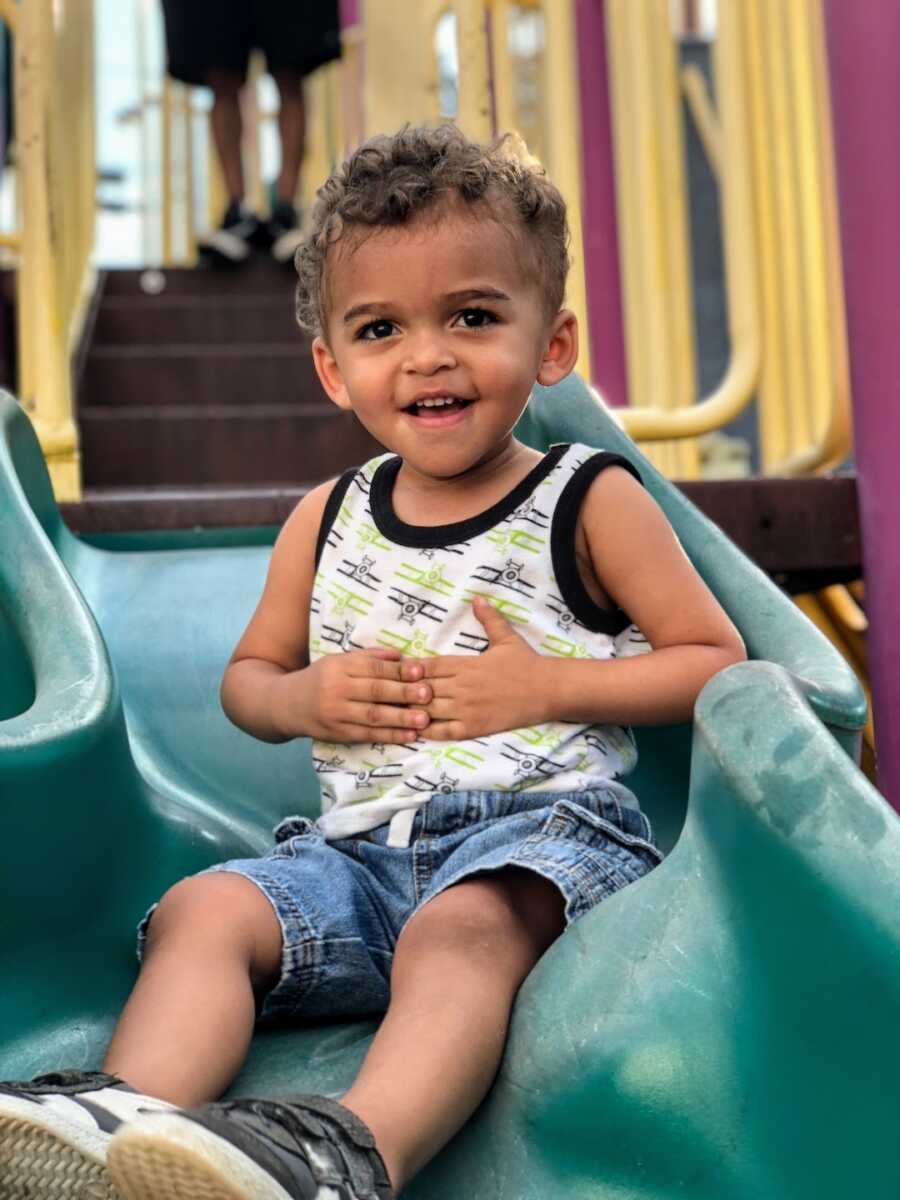
The nurse practitioner said they would not perform an MRI without an apparent reason, and she had no idea why a physician would tell us to ask for an MRI. Up until that point, every professional asked me the standard questionnaires, but no one seemed distressed or concerned. The consensus was Isaiah possibly injured or irritated a thoracic nerve. She referred us to an orthopedic surgeon to have an outpatient evaluation for possible nerve-related injuries. The closest appointment I could get with any orthopedic surgeon was about a two-hour drive away and was booked almost two weeks out from that night in the hospital.
It was a Friday, July 27 at 3 p.m. Two doctors and a nurse practitioner saw us that day. Isaiah loved the attention. He ‘ran’ up and down the colorful carpeted halls of the office, playing games with the staff as they studied his movements. After an hour of poking and prodding and playing, the lead physician came back into the room. Isaiah was sitting on the floor of the office, just smiling up as the doctor closed the door.
In contrast to Isaiah, the doctor’s face was solemn. He was serious. This was bad news.
From the moment he sat down and started talking, I was frozen. Those first words will forever be etched in my mind,
‘I believe it’s something bad…I believe he has muscular dystrophy.’
I remember feeling like the air was gone, and nothing made sense. All I could think was, ‘Muscular dystrophy? Isn’t that bad? Isn’t that genetic?’ I couldn’t hear anything the staff said after that. Honestly, I went numb. The next thing you know, we were leaving with yet another referral, but this time it was to the MDA clinic for suspected muscular dystrophy. I carried my unsteady two-year-old to the car, feeling like the entire world had stopped when really it hadn’t. I buckled Isaiah into his car seat as he smiled up at me, bright-eyed and unknowing of what just happened. Minutes felt like hours as I sat in the front seat of my car, unable to drive away from the office. I decided to look up ‘muscular dystrophy’ online.
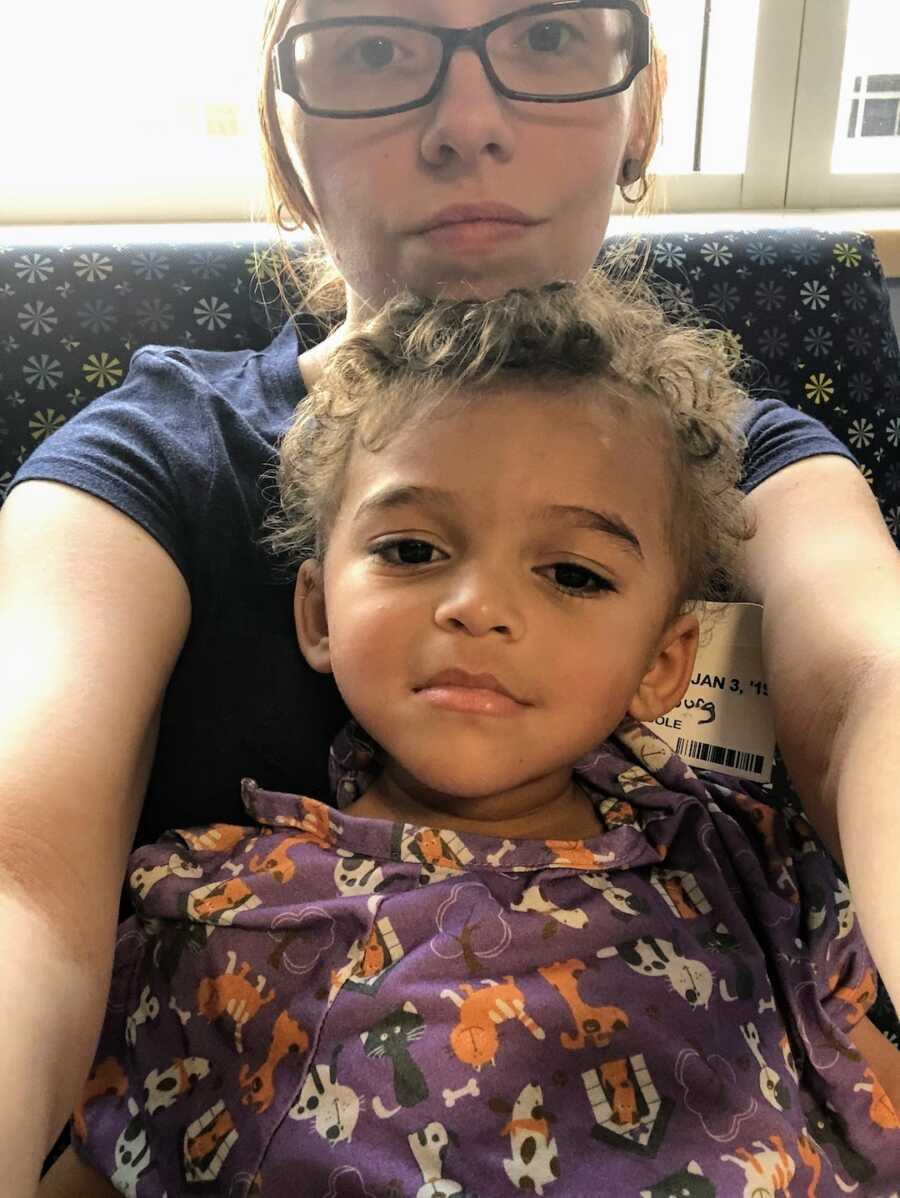
I was flooded with images of kids in wheelchairs, young teens on ventilators, and the words ‘average life expectancy 15-18 years of age’.. ‘no cure’…’100% fatal’…I couldn’t stop the tears once they started. I went to that appointment, hours away from home, completely alone. I never expected the type of diagnosis we got that day. Maybe if I had known, maybe it would have been easier to understand if someone had been there with us…We took the long way home. I wasn’t ready to get out of the car and keep living like we had not just gotten the worst news imaginable.
The next day I had a pharmacology exam in school. It was the first exam I ever failed in college. In nursing school, anything under 80 is failing, and in nursing school, there are no excuses to miss exams. I got a 70. My teacher pulled me aside and asked me why I missed certain questions. She said, ‘You knew those answers during review. What happened?’ My brain felt numb. I didn’t know how to explain the feeling to people. Anytime I began to try and talk about my son, I would cry. There were also many unanswered questions. ‘What kind of muscular dystrophy does he have?’, ‘How progressive is it?’, ‘How do you know they aren’t wrong?’, so many questions were asked in the beginning days. I like to think of it as the ‘in-between stage,’ in between suspected and diagnosed. There was still more testing to be done.
It was not until October of 2018, at the MDA clinic in Shriners Hospital of Tampa, that we had a clear answer through genetic testing. LMNA type congenital muscular dystrophy. The numbers for his subtype are so rare, I was told he was 1 out of 50 people ever diagnosed in the medical literature. We were told his mutation was completely spontaneous and random. No one could have known or prevented it. There was also no clear answer on how fast Isaiah’s condition would progress or what was actually in store for us.

In the beginning, there was nothing but grief and a kind of pain I had never experienced before. Nothing in my life can ever compare to this aching. It hurt so bad I couldn’t think, eat, or function. It felt like part of me had died, and in truth, it sort of did.
Slowly I began to read more, investigate treatment options, and advocate for my son. I scheduled all the numerous appointments and exams he would need in the upcoming months, and I prepared my home for his needs.
I learned quickly that LMNA associated congenital muscular dystrophy is typically on the severe end. Kids with LMNA-CMD have total body impact, particularly weak neck and upper body muscles. Contractures are common in many joints. Isaiah specifically is at risk for contracture in his left wrist due to stiffness. He wears a wrist brace on that arm to protect him.
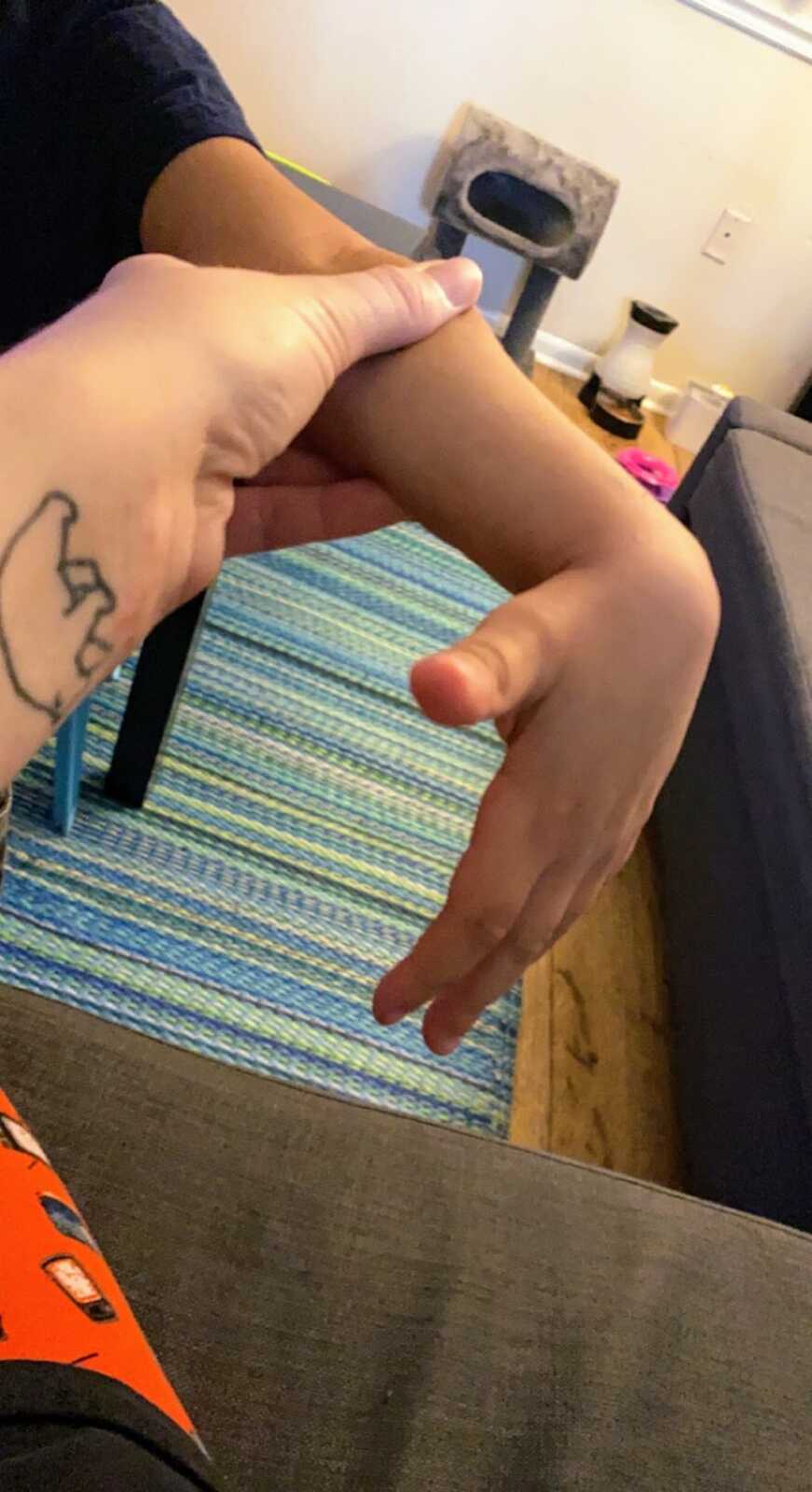

Scoliosis and spine rigidity is common, so Isaiah has X-rays every 6 months to monitor his spine.
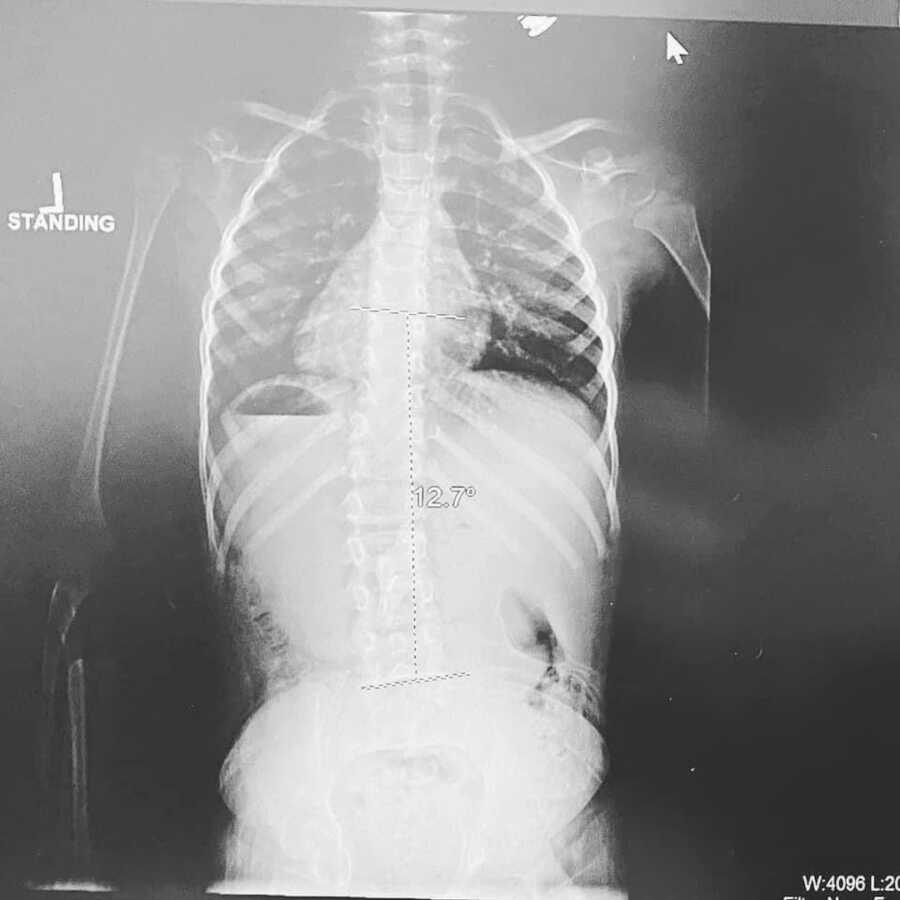
Although Isaiah walks now, kids with LMNA-CMD will all eventually lose the ability to walk. Currently, Isaiah requires a wheelchair for long distances. Over-exerting the muscles or frequent ‘ workouts’ can actually strain the muscles of kids affected and even worsen their condition. Isaiah will never be able to really ‘build’ his muscles like average children.
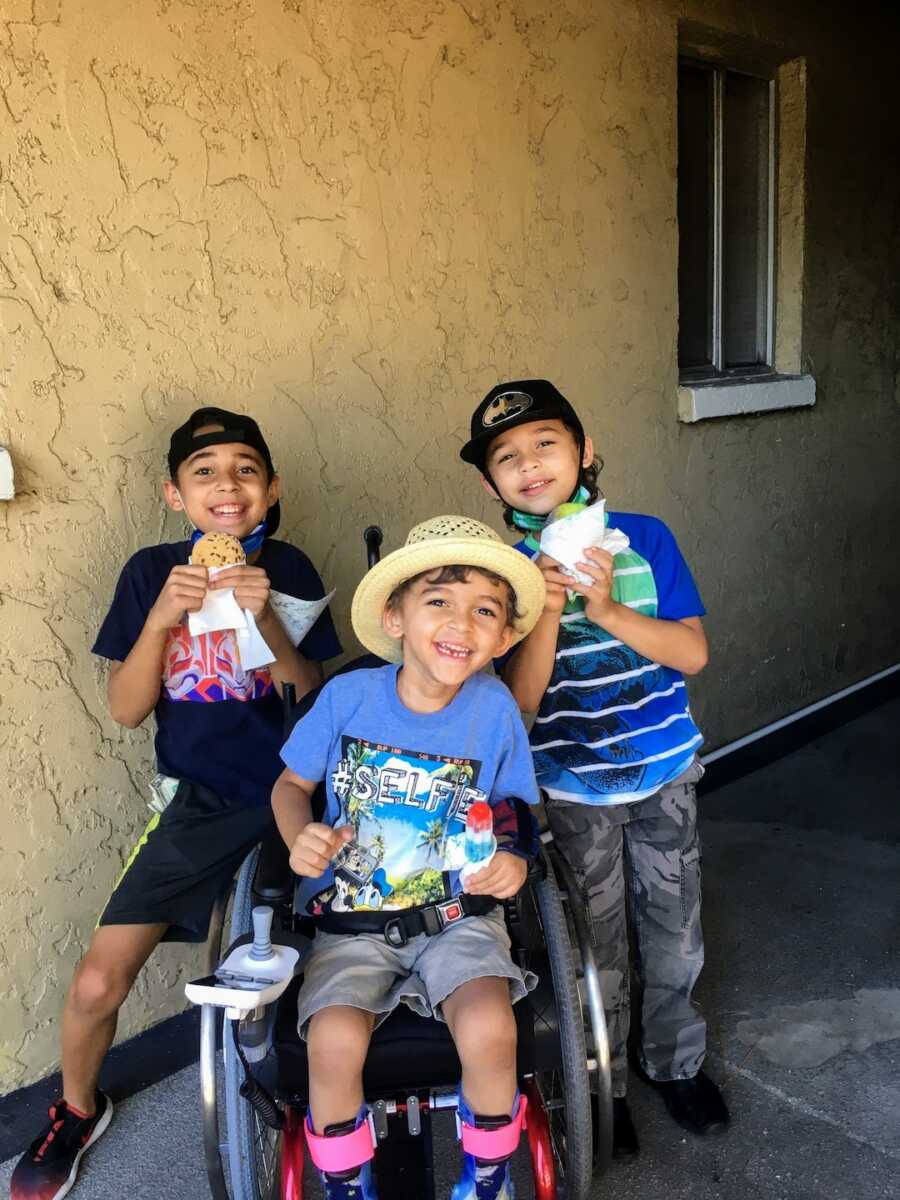
Over time LMNA-CMD causes hypotonia and muscle atrophy. Due to his total bodily weakness, he is at increased risk of respiratory illnesses. Anytime Isaiah gets sick with a cold or flu type bug, he requires frequent nebulizer treatments. He HATES breathing treatments.
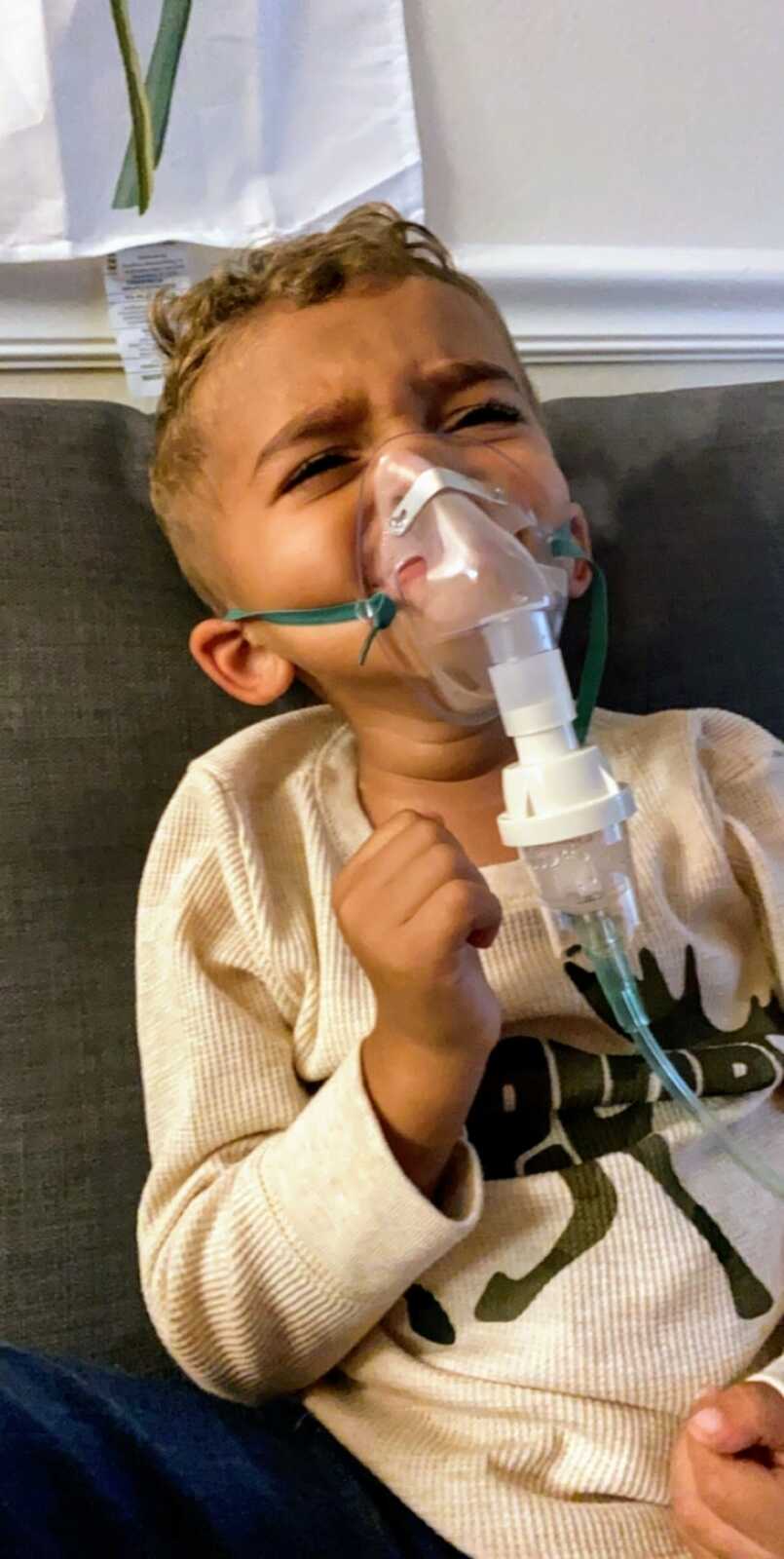
Even with proper treatment and monitoring, most kids with this type of muscular dystrophy will eventually require respiratory support such as a tracheostomy and ventilator. Isaiah is seen by a pulmonologist regularly to monitor his lungs.
He also has a cardiologist. Most people know that the heart is a muscle, but specifically, LMNA gene-associated disorders impact heart muscle tissue. Isaiah is at high risk for heart complications as he gets older. Some kids request pacemakers, defibrillators, or transplants.
Muscular dystrophy isn’t a virus or a bacteria you can catch and cure. It isn’t something you ‘get’; it is a genetic disease, something you are born with. It is something you have in your very DNA. Eventually, I began to accept that Isaiah always had it.
Isaiah always had muscular dystrophy.
It had only just been revealed to me.
Once I allowed myself the time to grieve the loss of the child I thought I had, I was able to finally meet the child in front of me, my Isaiah. Even now, no one can tell me for sure how long we have with Isaiah, but I know it’s not long enough. I decided that I wouldn’t let the grief swallow up what time we had together. It was time to find hope.
The funny thing is, Isaiah was born in beautiful sunny Florida, just minutes from white sandy beaches. They always say, ‘you never go to the beach when you live by it,’ and it really is true. I believed we would simply ‘go another time,’ but Isaiah didn’t have time. I had homework piling up, assignments, and exams to prepare for, but Isaiah had never been to the beach. So in February of 2019, he touched the sands for the first time. We walked along with the water hand in hand, and we splashed together with our feet in the waves. We laughed, and his tiny giggle and big toothy grin melted away all the fears I had building up inside.
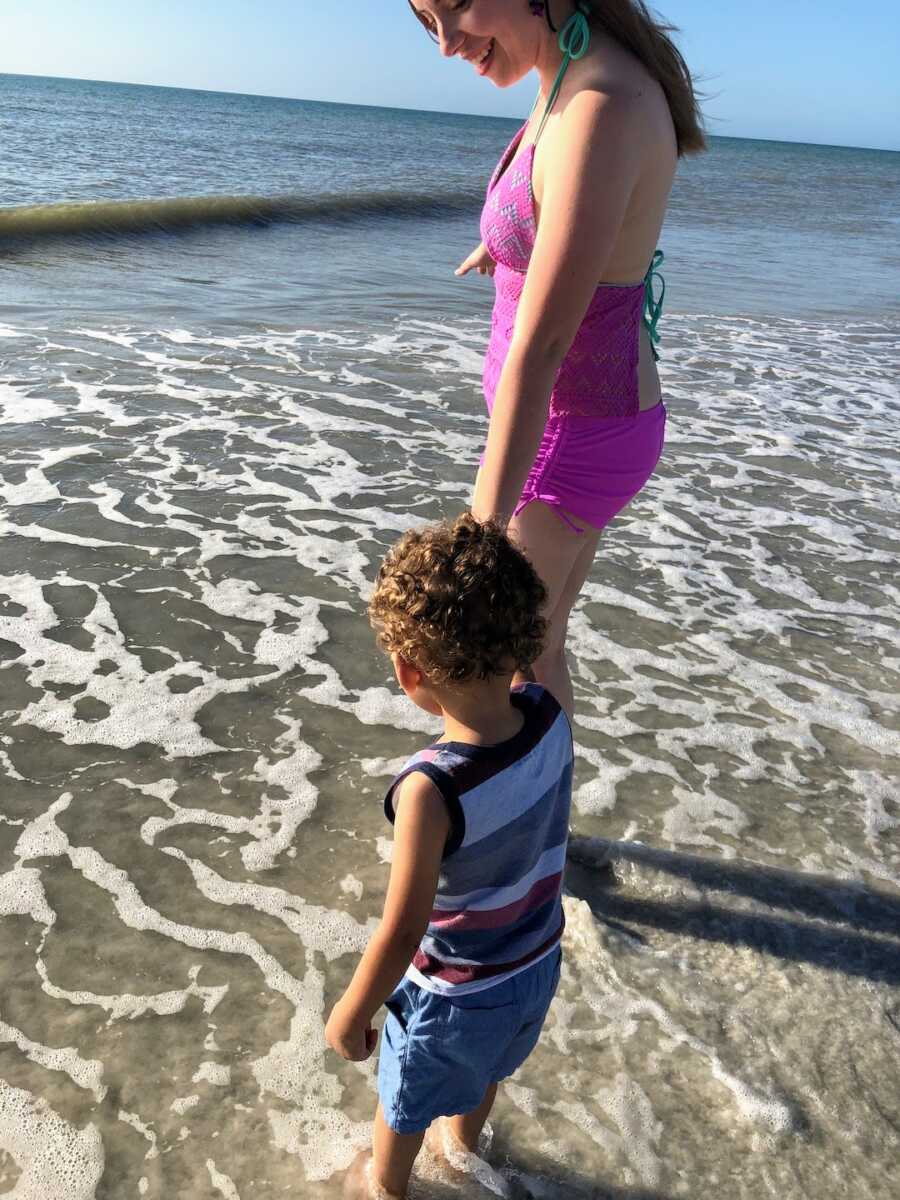
March 2019, Isaiah got sick. His fevers were uncontrolled. He wouldn’t eat. He was so tired and sleeping all the time. That was his first hospitalization. They suspected he had a seizure in the emergency room, so we had to stay for a couple of days for monitoring. He was dehydrated and very, very sick. The fear was back.
There’s nothing like a hospital pull-out chair bed. If you’re lucky enough to not know the feeling of sleeping in one with a paper-thin sheet that barely covers your toes, count your blessings. It looked like my son was sleeping in a cage. There were monitors, wires, IVs, all the things that I had dealt with in school all the time. Even knowing the things that I do as a nurse, it all seemed to disappear when I found myself on the other side. There was this huge sense of helplessness.
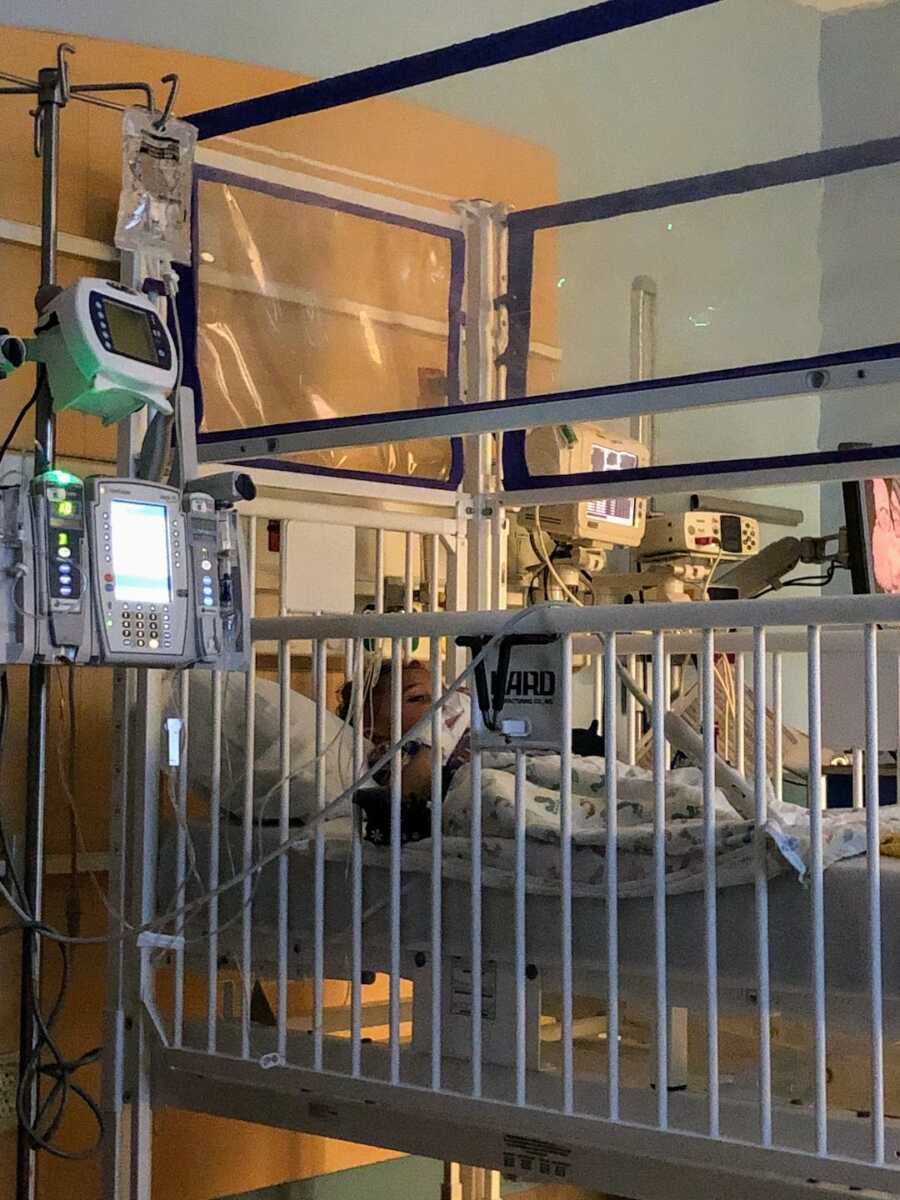
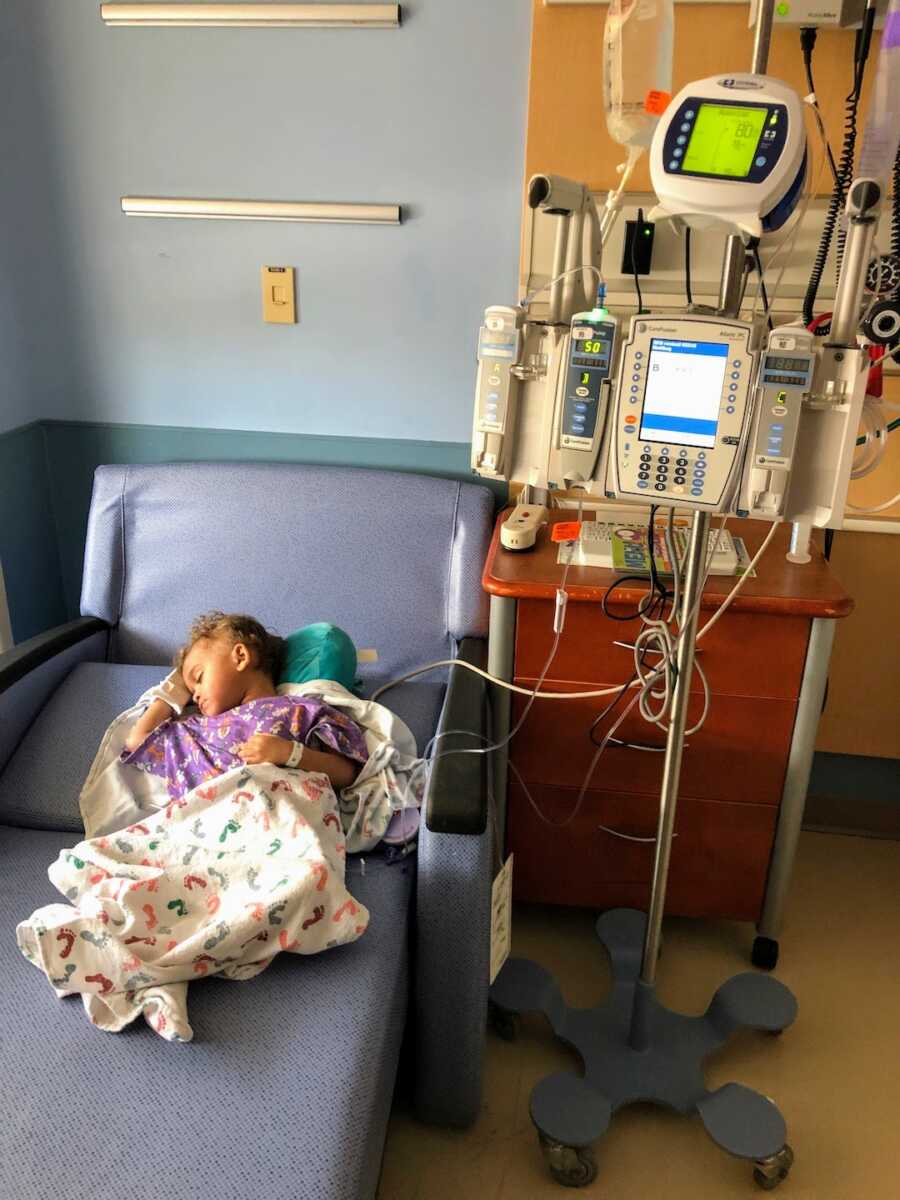
Part of me felt guilty, guilty for being so scared when he was brave. I felt guilty for being sad when he was the one who had to go through the pain. I questioned myself: did I miss something earlier on because I was distracted by school? I still had final exams coming up, not to mention the NCLEX board exam. I remember bringing my textbooks with me everywhere in my car. I read in waiting rooms, during therapy visits, during scans, whenever he was sleeping, or I found a moment to study. Sometimes I even read out loud to him. I’m sure Brunner & Suddarth’s Textbook of Medical-Surgical Nursing was a great bedtime story.
Shortly after that tumultuous stay, Isaiah was recommended for feeding tube placement. His body weakness made it hard for him to sit upright at a table, and his jaw was tired from eating. He became very underweight. Worse than that, when he is sick, he won’t eat or drink anything at all. It was a huge decision to go forward with surgery. It took two OR trips total for the Mic-Key button placement. I remember feeling nauseous when I said goodbye in the hallway outside the OR doors. I wondered, ‘How could he go into such a scary unknown place without his mommy by his side?’ Sitting in a surgical waiting room is nerve-wracking. Even routine procedures like this are terrifying, and this is only the beginning of many he will likely need in his future. Isaiah is now tube fed two to three times a day through his Mic-Key button, depending on how much he eats by mouth. Initially, after his surgery, there were complications with healing that required frequent dressing changes and prescription creams for his site. It took a few months, but his Mic-Key completely healed and doesn’t hurt him now. He even helps with caring for it and tube changes. The button is changed regularly at home, and we can increase in size as he grows.
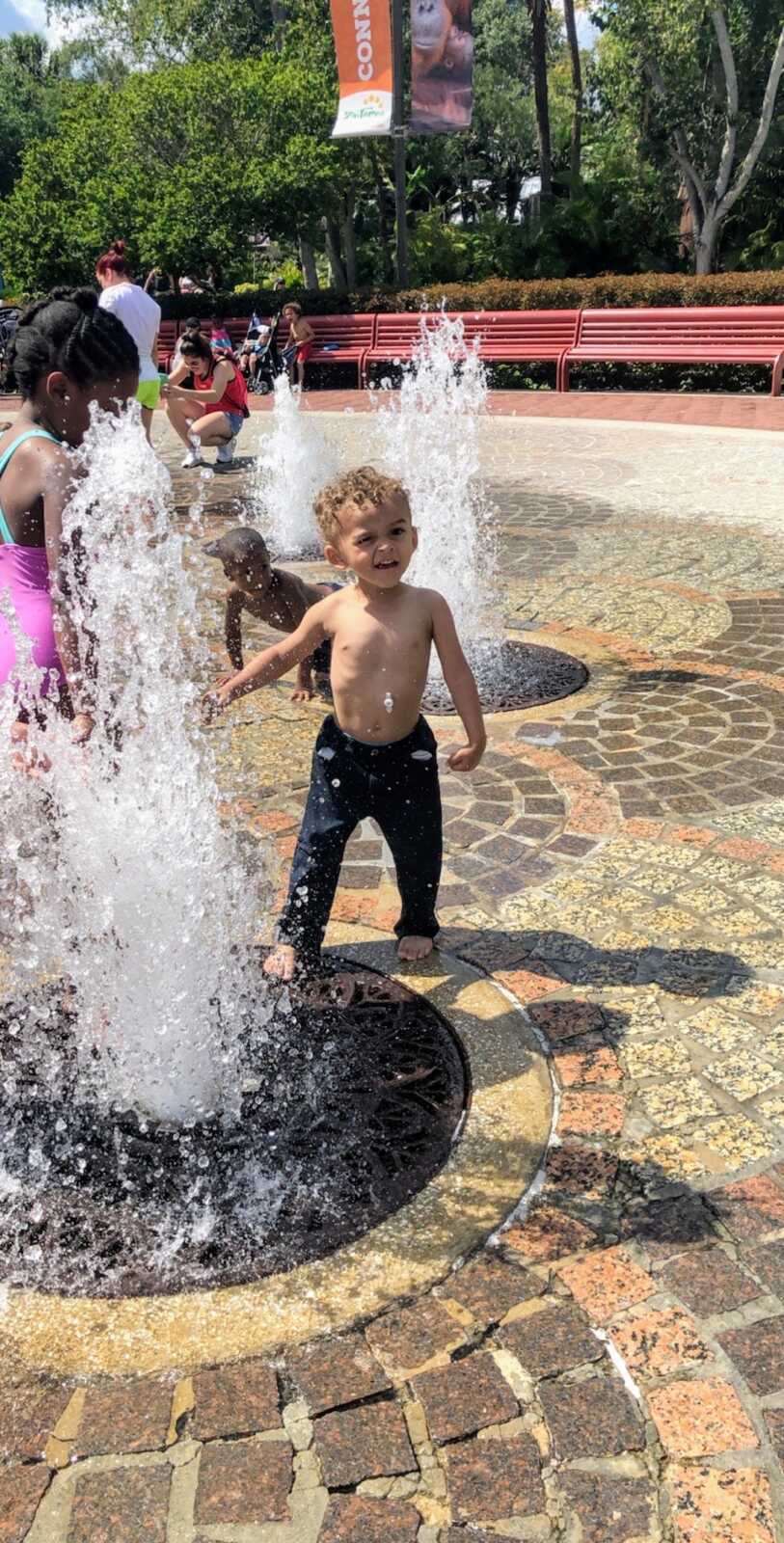
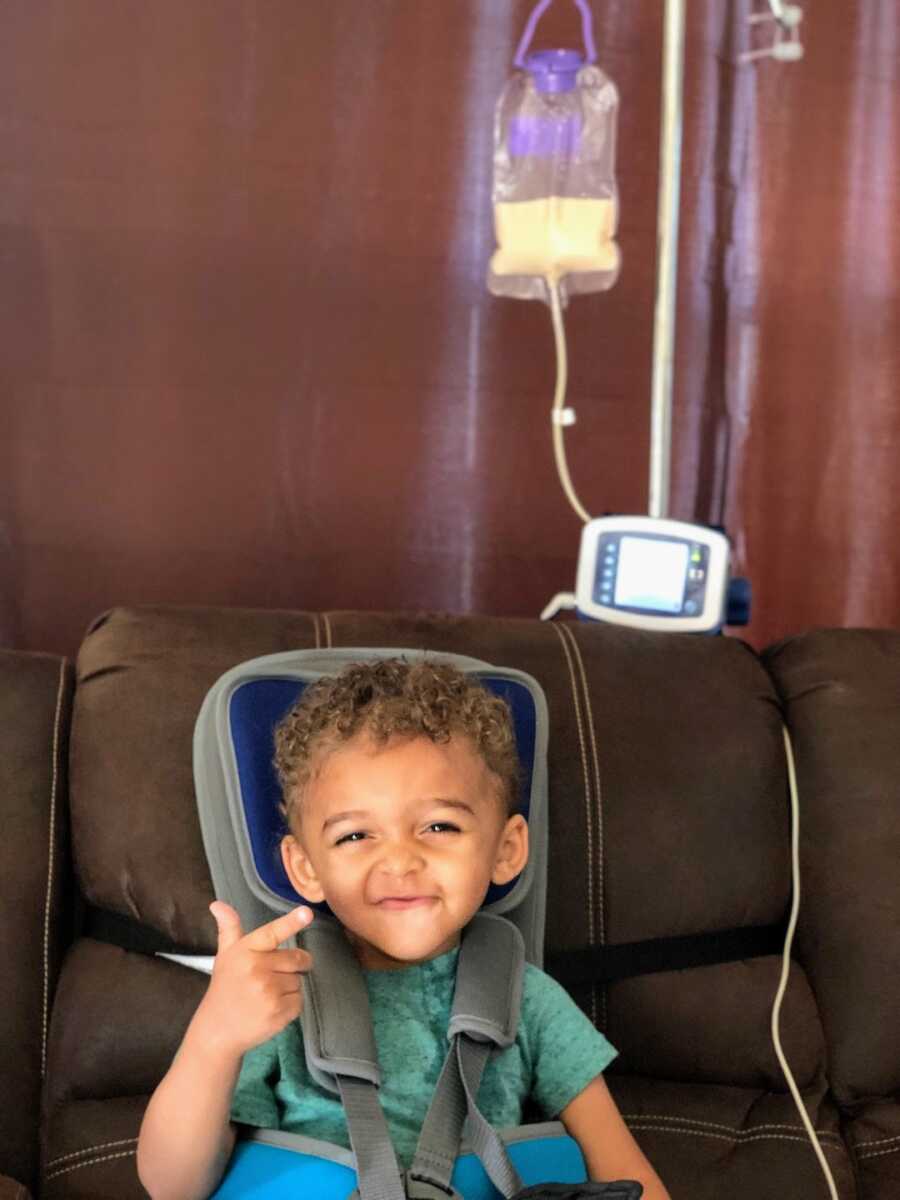
Despite the hospital stays and both of Isaiah’s surgeries, I managed to complete all my required coursework. In April of 2019, I completed my nursing program. I didn’t plan to attend my graduation ceremony. It didn’t matter to me. I was just happy to have completed it. My degree meant finally being able to make more money so that I could work fewer hours to be home with Isaiah. On the day of my graduation, the school advisor called me. She was calling to congratulate me on being valedictorian in my program. I couldn’t believe it. Of course, I had to attend. Only my dad was able to come to my graduation. I didn’t tell anyone I was going until about 20 minutes before.
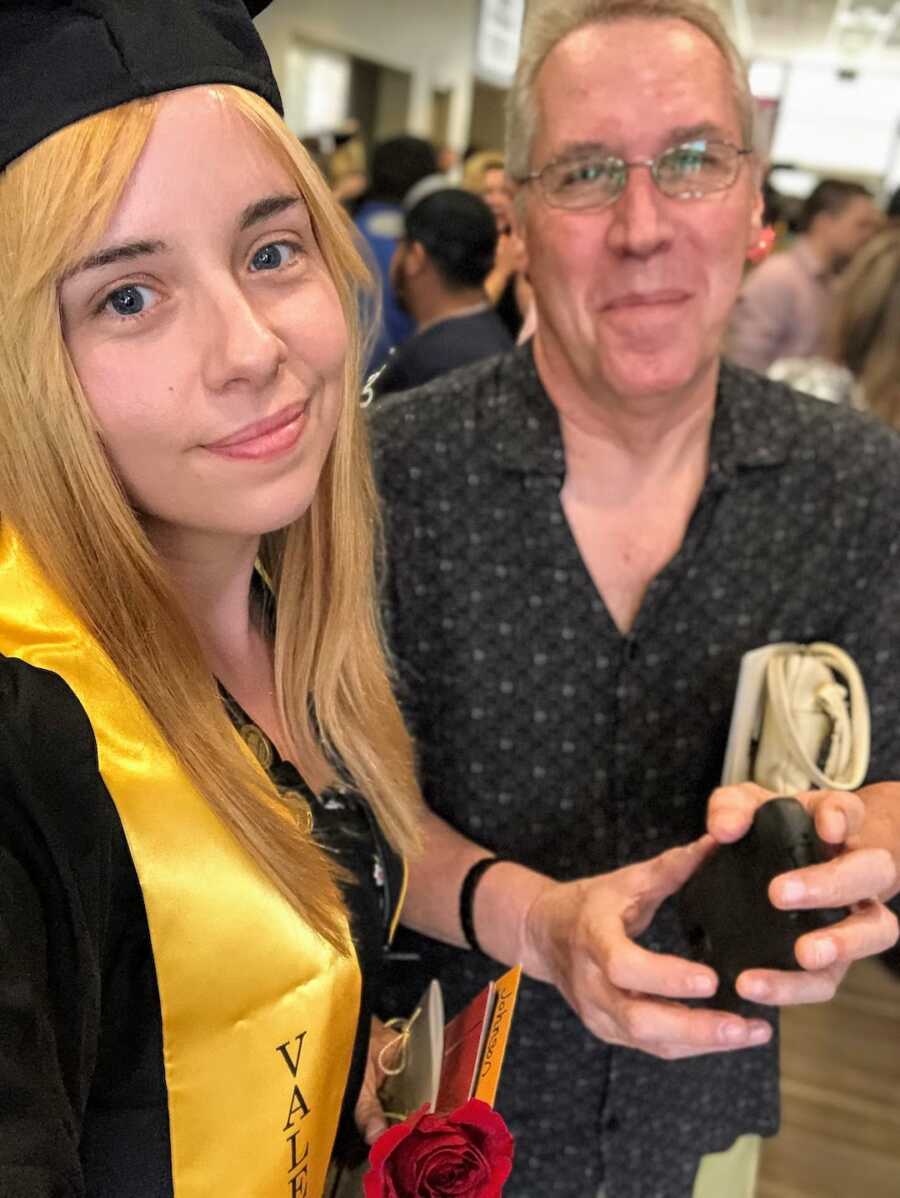
I used to think that people would not believe me if I told them my son had muscular dystrophy. When he was younger, he didn’t look much different from an average toddler. Not to mention, you could never tell Isaiah that he is different from any other kid. He would argue that he is just as good as anyone else, and he’s 100% right. That boy is incredible and brave. He climbs jungle gyms, wrestles with his big brothers, and absolutely loves amusement rides (within reason). We recently built memories at LegoLand Florida because, like many kids his age, Isaiah is obsessed with Lego. Most of the time, I don’t see Isaiah differently from his siblings. With his huge personality, it’s easy to look past his wheelchair, helmet, braces, etc., and just see Isaiah for who he is.
In 2020, after overcoming so many struggles the year before, I planned for Isaiah to attend pre-k at the local elementary school where his brothers attend. Sadly, muscular dystrophy hasn’t been the only life-threatening battle Isaiah has faced in his short five years of life. As we all know, a pandemic hit our world in 2020. With respiratory illness being the most common cause of death in the first 10 years of life for children with Isaiah’s condition, this pandemic was the scariest thing in my life since his diagnosis day back in July. Again, I feared the worst.
During a time where our nation needed nurses, I had to scale back. I needed to be home for my sons, to shield them from the plague outside. I struggled to keep up with my hours, and I had to really crack down on our budget. I homeschooled for the first year of the pandemic, juggling all the kids’ education with Isaiah’s therapies and appointments.
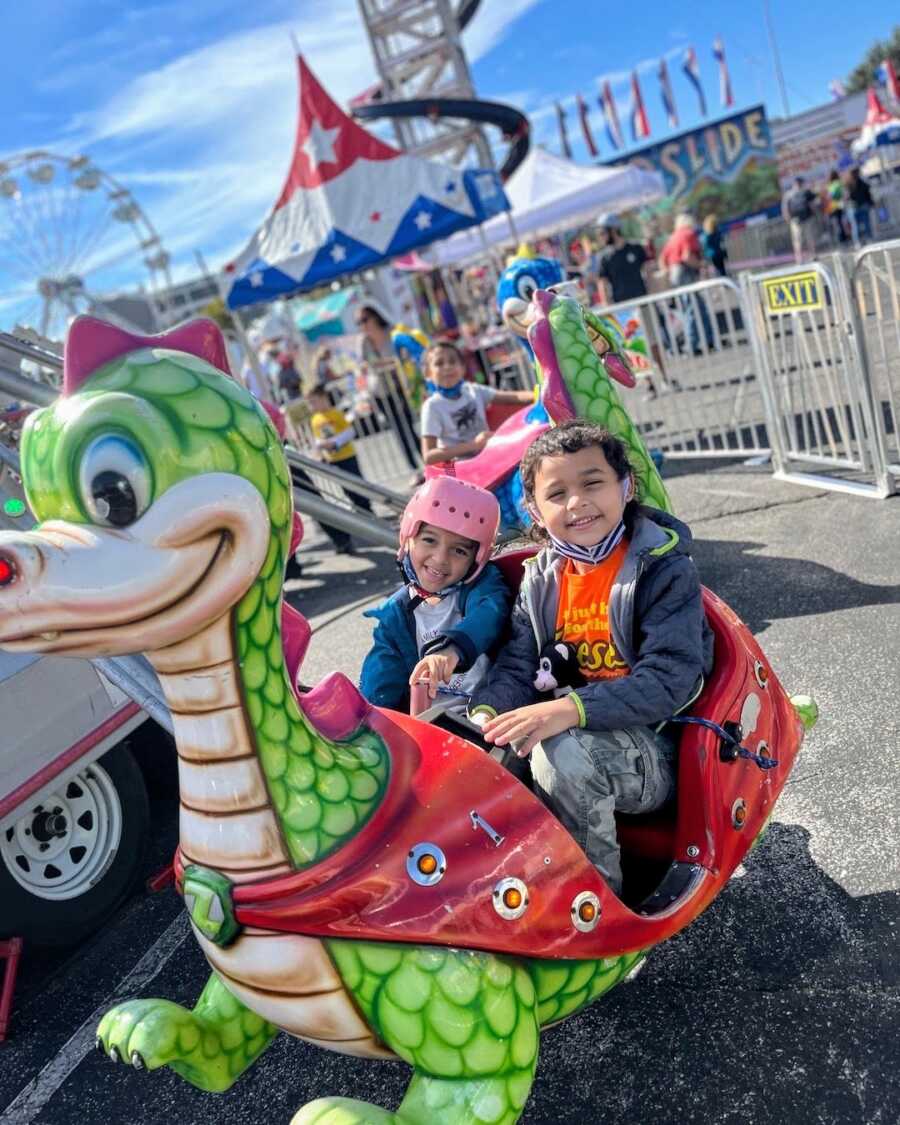
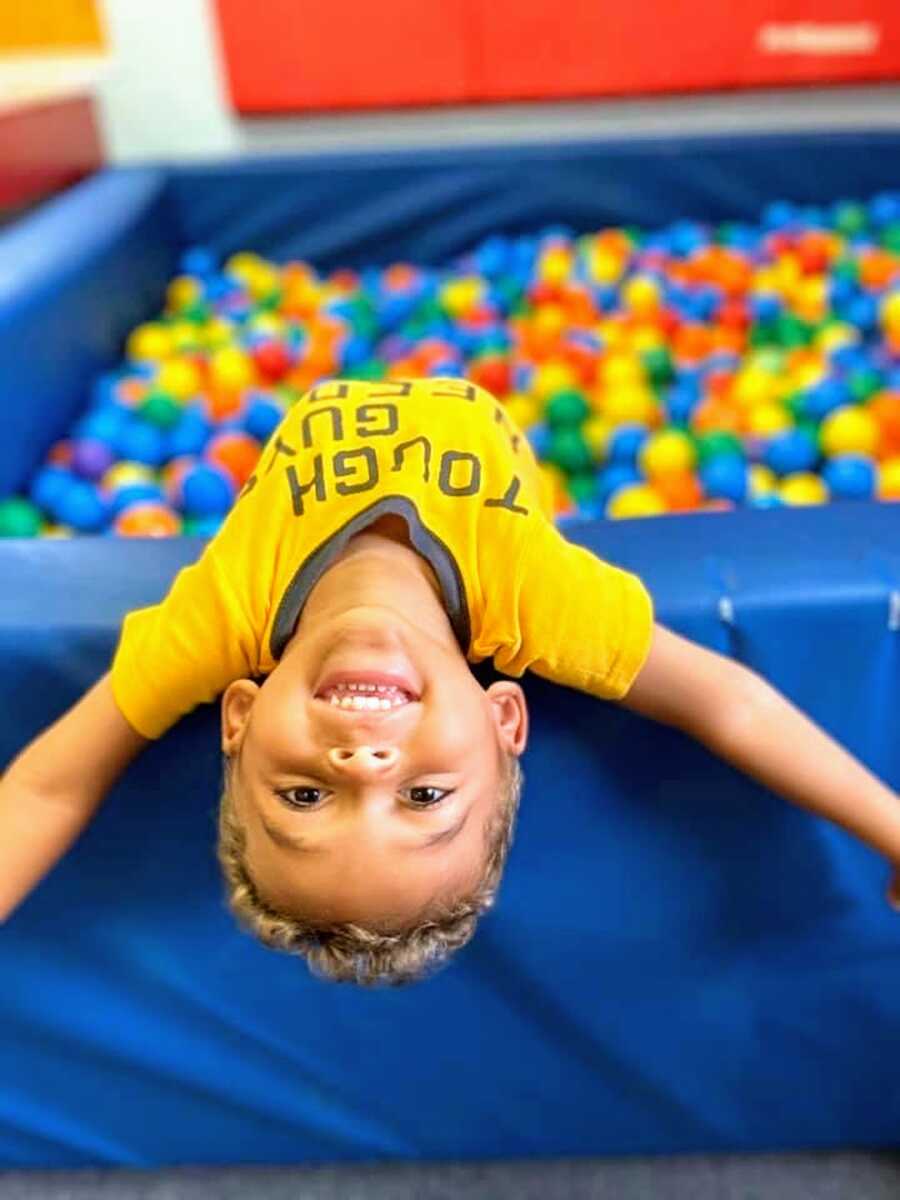
Finances only got harder to manage, and in July of 2021, I accepted a job in the ICU, knowing that I would be caring for critically ill COVID patients because just like nursing school didn’t stop, our bills don’t either. Isaiah had to be sent to a medical daycare center during the daytime in order to attend his speech therapy, occupational therapy, and physical therapy throughout the rest of 2021. I held on to hope for the vaccine and that maybe in 2022, Isaiah could start kindergarten. This hope was finally recognized on November 8, 2021, when Isaiah received his first dose of Pfizer’s children’s vaccine.
My biggest goal with putting Isaiah out there has always been to spread awareness about muscular dystrophy. You’d be surprised how many of my coworkers, including nurses and doctors, don’t know what a diagnosis of muscular dystrophy really means for a child and how many different types of muscular dystrophy are actually out there. Most people respond in shock when I tell them my son’s condition is fatal. They usually try to remind me to ‘Have hope,’ or ‘Hope for a cure,’ and I really don’t. It simply does not exist at this time.
I like to say that I do have hope, just not the type of ‘fixing everything’ hope that people usually think of. My hope looks a little different. My hope is just for today. I hope to build memories with my sons that I can be proud of every day. My hope is that my sons will always know they are loved whatever years they were gifted with. I hope my son Isaiah will have joy and meaning in his life.
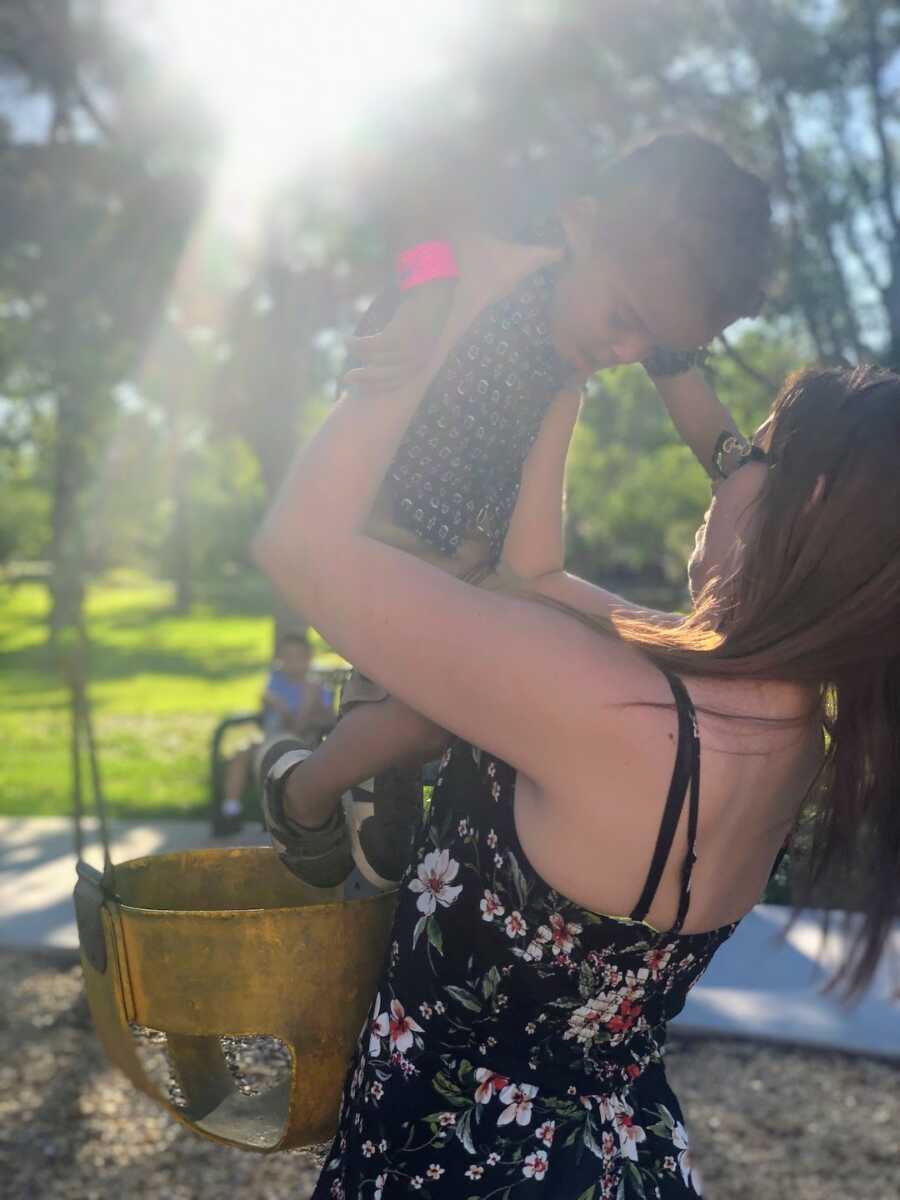
There are still days when I feel sad, scared, and I grieve the losses that haven’t happened yet, along with ones that have. When I feel that cloud of grief hanging over me, I try to remind myself if Isaiah can keep fighting, then so can I. I can’t give up. I’ve learned that as a mother, I can be strong enough for both of us. It isn’t always about making it to the end. It’s about celebrating throughout the journey. We will fight this head-on with a smile on our faces and at least a hundred memories to keep the clouds at bay.
Today, I continue to fill my arsenal with even more information, new clinical trials, possible studies for LMNA-related diseases. I’ve joined incredible support groups of other special needs parents, and we have made friends from all around the globe through social media.
Isaiah’s condition is still progressive, and yes, it’s still fatal. There is no stopping muscular dystrophy. If I ever hope to change that fact for Isaiah and give him the life he deserves, I have to make people care. People really need to know about him and all the other little ones like him that fight daily battles just to walk. Unless people care enough to do something about it, Isaiah will one day lose his abilities to walk, climb, and even breathe.
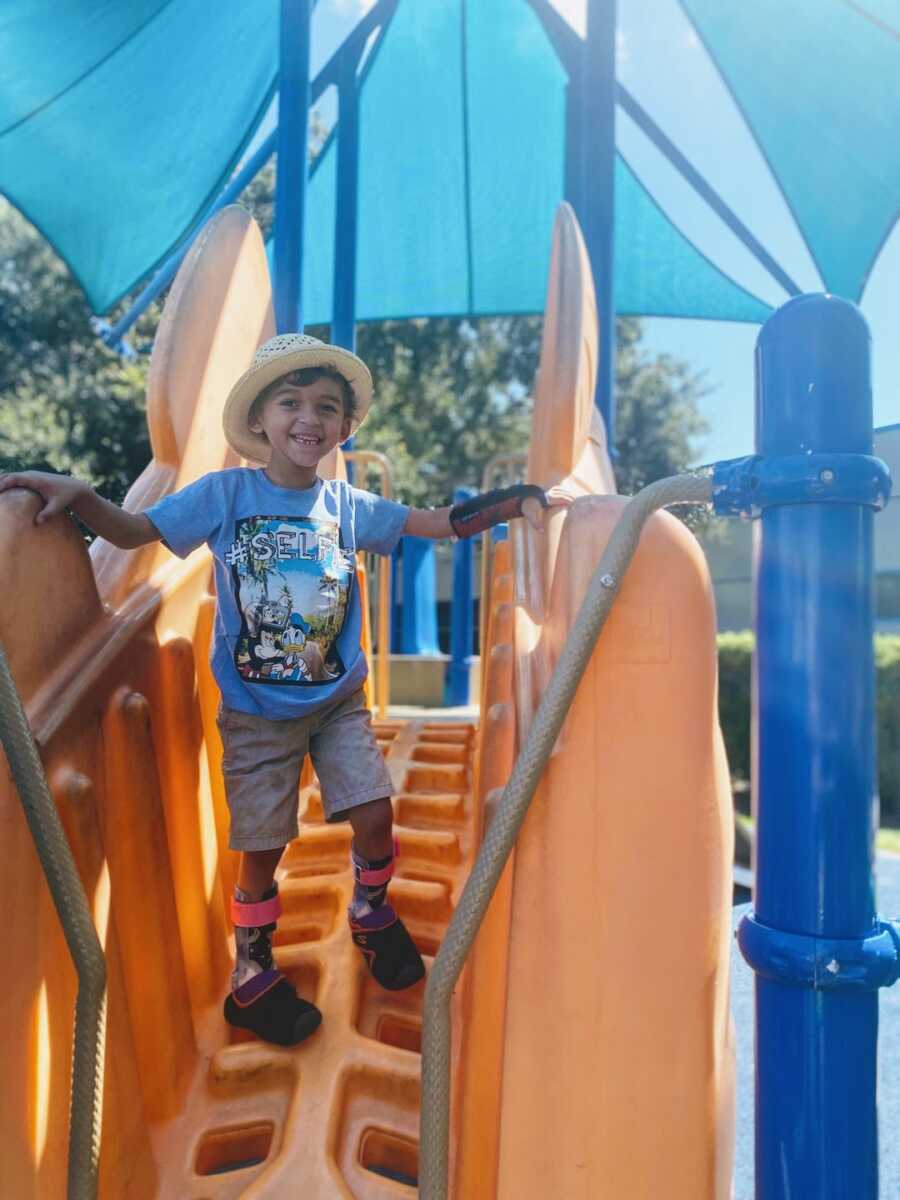
For now, we can still go to the park, the playground, or the zoos. We have beautiful accessible local beaches, theme parks, and museums. Excitingly, Isaiah was recently referred for the Make-A-Wish program. His biggest wish has been to go camping. He has asked for a travel trailer or camper so that he can spend more time exploring and adventuring to new places with his family. Isaiah is determined to continue to enjoy life like any other boy. Isaiah really is not as ‘different’ as I thought he would be when I was first handed that diagnosis three years ago. For that reason alone, I am incredibly full of hope.
In the end, life really isn’t promised to anyone. It’s just borrowed.”
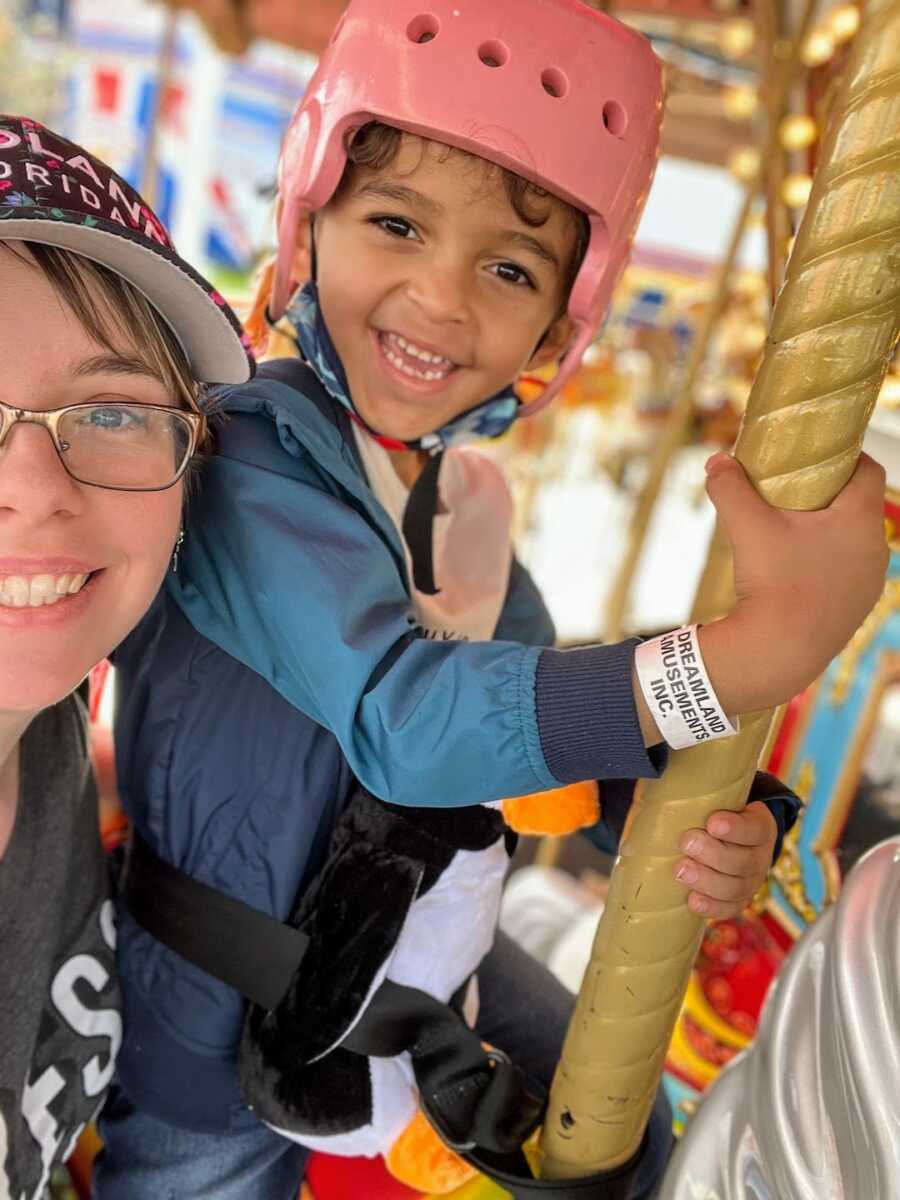
This story was submitted to Love What Matters by Nicole Martin, RN of Dunedin, Florida. You can follow her son’s journey on Instagram and Facebook and learn more about his condition here. Submit your own story here, and be sure to subscribe to our free email newsletter for our best stories, and YouTube for our best videos.
Read more stories like this:
Please SHARE this story on Facebook and Instagram to encourage others to live life to the fullest.

